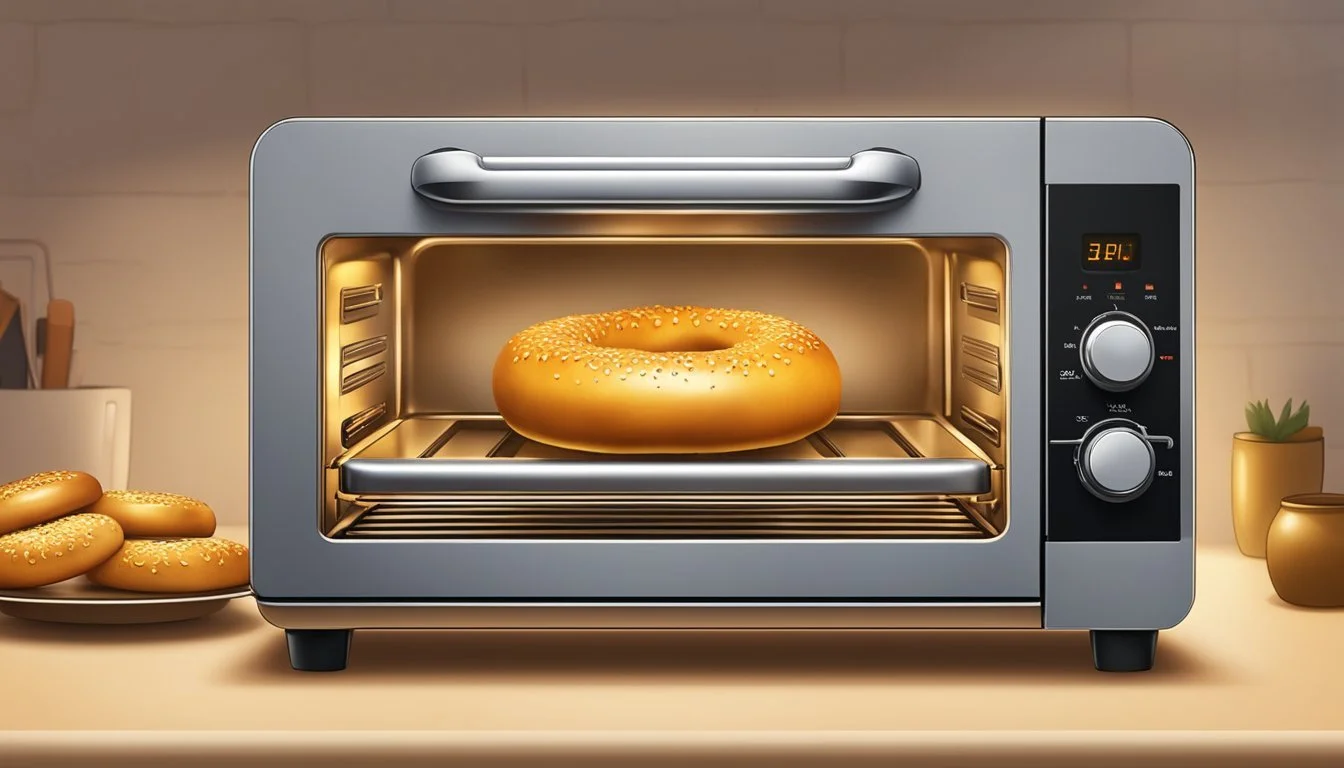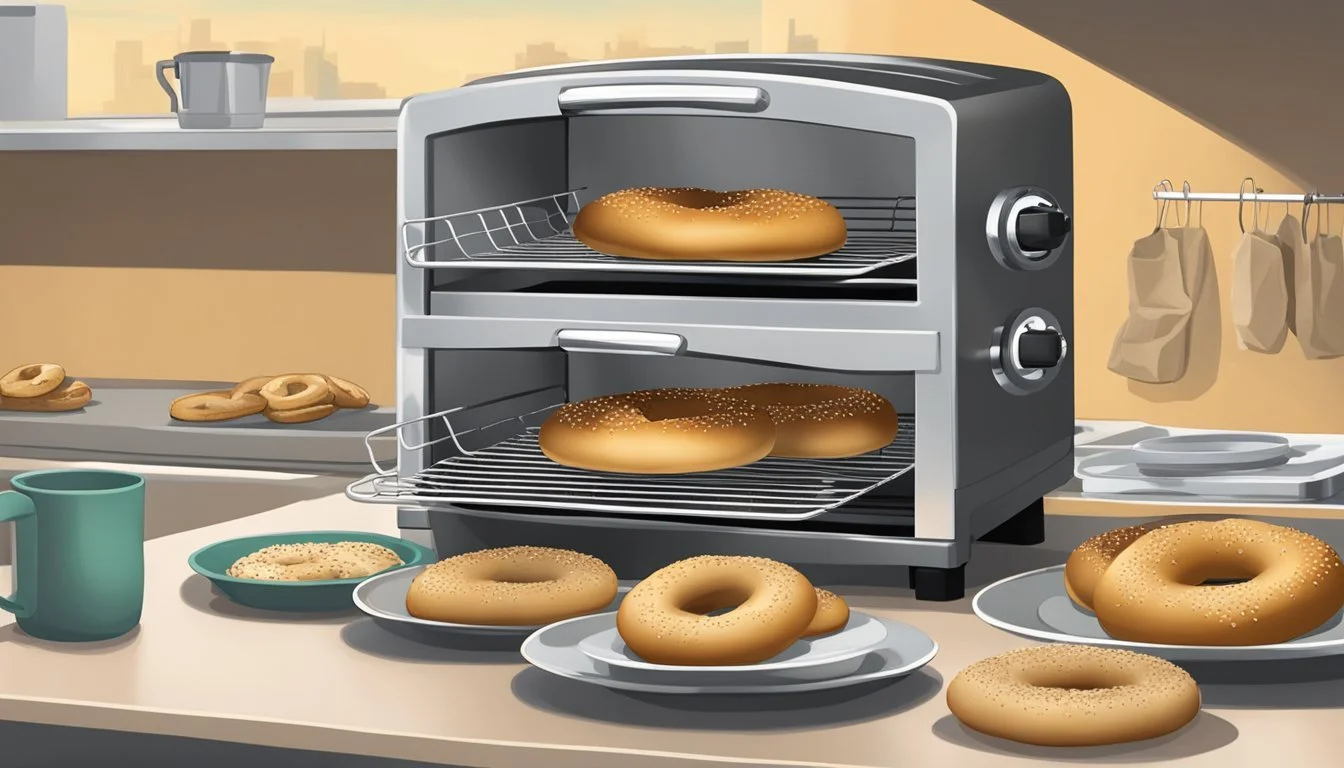How to Reheat Gluten-Free Bagels for Optimal Taste and Texture
Reheating gluten-free bagels can be tricky, but with the right techniques, you can enjoy a warm, chewy texture just like when they were freshly baked. The microwave is one of the quickest methods, ideal for a speedy breakfast or snack. Simply wrap the bagel in a damp paper towel and microwave for 15-20 seconds.
For those preferring a crispier exterior, the oven is an excellent option. Preheat your oven to 350°F, place the bagel on a baking sheet, and heat for about 10 minutes. This method ensures an even heat distribution, maintaining the bagel’s structure and taste.
Another effective way is using a toaster oven. Slice the bagel in half and toast for a few minutes until it reaches the desired level of warmth and crunchiness. The toaster oven provides a balanced approach, combining the speed of microwaving with the texture of oven heating.
Understanding Gluten-Free Bagels
Gluten-free bagels differ significantly from traditional bagels due to their unique ingredients and the absence of gluten. To achieve the desired texture and flavor, careful selection of gluten-free flours and the addition of specific binding agents are crucial.
Characteristics of Gluten-Free Dough
Gluten-free dough lacks the elasticity provided by gluten in wheat flour. This means it requires other binding agents such as xanthan gum or psyllium husk to mimic gluten's properties.
Typical gluten-free flours include rice flour, tapioca flour, potato starch, and sorghum flour. These create a balanced blend that can absorb moisture effectively without becoming too dense.
Because gluten-free dough is often stickier and less pliable, it needs more water and careful handling. The dough usually requires a longer rest time to hydrate fully, ensuring a better rise and texture.
Choosing Gluten-Free Ingredients
Selecting the right gluten-free ingredients is essential for making bagels. A gluten-free flour blend is a good starting point, combining rice flour, potato starch, and tapioca flour to create a balanced texture.
Key Ingredients:
Yeast: Essential for leavening.
Salt: Enhances flavor.
Sugar: Feeds the yeast and adds slight sweetness.
Xanthan Gum: Provides elasticity.
Psyllium Husk: Improves structure and moisture retention.
Using high-quality, certified gluten-free ingredients will help avoid cross-contamination and ensure the best results.
Preparation of Gluten-Free Bagels
Preparing gluten-free bagels involves several steps to ensure they have the desired texture and flavor. These steps include mixing and shaping the dough, then boiling the bagels before baking to create that quintessential chewy finish.
Mixing and Shaping the Bagels
To begin, the dry ingredients such as gluten-free flour, baking powder, and salt are combined in a large bowl. Using a stand mixer, these ingredients are mixed with warm water and yeast to form a sticky dough.
Next, the dough is divided into equal portions, typically weighing around 95 grams each. Each portion is shaped into a ball and a hole is created in the center to form the classic bagel shape. A gentle rolling between the palms can smooth out the edges, resulting in even-sized bagels.
The Boiling Process
Once the bagels are shaped, they need to rise in a warm place for about 45-60 minutes. During this time, the boiling water is prepared. Adding baking soda to the water helps achieve the chewy texture of the bagels.
The bagels are then carefully dropped into the boiling water for about 30 seconds per side. Using tongs or a slotted spoon, they are flipped to ensure even cooking. After removing from the water, they are placed on a baking sheet lined with parchment paper. An optional egg wash can be applied to the top before baking to achieve a golden-brown finish.
These steps ensure that the gluten-free bagels are properly prepared for baking, resulting in a delicious and satisfying texture.
Baking and Achieving the Perfect Texture
To bake gluten-free bagels successfully, follow precise oven settings, baking times, and accurately determine doneness to achieve a golden brown, perfect texture.
Oven Settings and Baking Time
Preheat the oven to 450°F. This high temperature is crucial for a crispy exterior.
Use a baking tray lined with aluminum foil to prevent sticking and ensure even baking.
Place the bagels on the tray with some space between them. Bake for 20-25 minutes. Midway through, you may rotate the tray for uniform browning.
You'll want to look for a golden brown color on the bagels' surfaces. If needed, leave them in for an additional 2-3 minutes, but avoid overbaking which can dry out the texture.
Determining Doneness
To check if the bagels are done, tap their bottoms. A hollow sound indicates they are baked through.
Inspect the color, aiming for golden brown. Another test is to insert a toothpick. It should come out clean or with minimal crumbs.
Also, the bagels should feel firm to the touch yet slightly springy, reflecting the right internal texture.
If you follow these steps, you'll have gluten-free bagels fresh out of the oven with a delightful texture.
Serving and Topping Suggestions
Gluten-free bagels can be enhanced with a variety of classic and contemporary toppings, and paired with complementary accompaniments that enhance their unique flavors. Exploring these options can help make any gluten-free bagel experience delightful.
Classic and Contemporary Toppings
Classic toppings for gluten-free bagels include cream cheese, butter, and vegan or dairy-free alternatives. Cream cheese can be plain or flavored, offering a variety of taste profiles. Butter, both salted and unsalted, provides a rich and creamy texture.
For those seeking vegan or dairy-free options, olive oil or egg white substitutes can be excellent choices. Toppings like sesame seeds, poppy seeds, and everything bagel seasoning add a satisfying crunch and burst of flavor.
For a sweeter option, consider spreadings such as honey or molasses. Cinnamon and sugar can be sprinkled on top for a delightful treat. Experimenting with different toppings can make each bagel unique and enjoyable.
Accompaniments and Pairings
When serving gluten-free bagels, the right accompaniments can elevate the experience. Consider pairing bagels with a fried egg, fresh tomatoes, or slices of avocado. These additions can make for a hearty and satisfying meal.
For a lighter option, serve the bagels with fresh fruits or a mixed greens salad. Pairing with a side of Greek yogurt or cottage cheese can provide a good source of protein.
For a complete breakfast, combine gluten-free bagels with a selection of fresh juices, coffee, or tea. Each pairing complements the bagel’s flavors and can make for a well-rounded meal.
Tips for Reheating Gluten-Free Bagels
Reheating gluten-free bagels can be tricky, but the right methods can ensure they remain soft and delicious. Here are the best ways to heat them up without compromising texture.
Using the Oven for Reheating
Temperature: Preheat the oven to 350°F (175°C).
Preparation: Place the bagels on a baking sheet lined with parchment paper.
Time to Reheat: Bake for 5-7 minutes. Flipping halfway ensures even heating. For added moisture, wrap the bagels in aluminum foil before placing them in the oven.
Pros: This method provides even heating and maintains the bagel's original texture, especially if using gluten-free varieties which can easily dry out.
Microwave Reheating Methods
Preparation: Place the bagel on a microwave-safe plate.
Cover: Cover it with a damp paper towel to prevent drying out.
Settings: Reheat on medium power for 20-30 seconds. Adjust based on the microwave's wattage and the bagel's size.
Note: Microwave on short intervals to avoid making the bagels rubbery. This method is convenient but requires caution to maintain the bagel's softness.
Pros: Quick and efficient for immediate consumption. Ideal when short on time.
Alternative Reheating Techniques
Toaster Oven: Set to the toast setting for 2-3 minutes. It quickly reheats and crisps the outside without drying the interior. Rotate if needed.
Steaming: Use a steamer basket over boiling water. Place the bagels in the basket and cover for 2-3 minutes. This keeps them moist and soft.
Air Fryer: Set to 325°F (160°C). Place bagels in a single layer and heat for 3-4 minutes. This method ensures a quick, crispy exterior while keeping the inside soft.
Each reheating technique has its advantages, making it easier to enjoy gluten-free bagels the way you prefer. Experiment to find the best method that suits your taste and convenience.
Storing Gluten-Free Bagels
Proper storage of gluten-free bagels ensures they remain fresh and delicious. Different techniques are needed for short-term and long-term storage to maintain their texture and flavor.
Short-Term Storage Tips
For short-term storage, keep bagels in an airtight container or resealable plastic bag. This prevents them from drying out. Store at room temperature for up to two days.
Use parchment paper to separate bagels and avoid sticking. If the bagels include toppings, place a piece of paper towel in the container to absorb excess moisture.
If you plan to eat them within three to four days, store them in the refrigerator. Ensure they are wrapped properly to prevent them from absorbing other flavors.
Freezing and Long-Term Preservation
For long-term storage, freeze bagels to maintain their quality. Slice each bagel in half before freezing. This makes it easier to toast directly from the freezer.
Wrap each half separately in plastic wrap. Then, place them in a freezer-safe bag or container.
Label the bag with the date to keep track of how long they’ve been stored. Gluten-free bagels can be frozen for up to three months without significant loss in quality.
To thaw, leave the bagels at room temperature for a few hours, or use the defrost setting on a microwave. For best results, toast the bagels after thawing to restore their original texture.
Making Gluten-Free Bagels at Home
Creating gluten-free bagels at home allows for customization in flavors and ensures the quality of ingredients used. This guide provides a reliable recipe and tips for adding personal touches to your bagels.
Step-by-Step Homemade Bagel Recipe
To make gluten-free bagels, start by preparing the dough. Combine 2 ¾ cups of a gluten-free flour blend with 2 ¾ teaspoons of xanthan gum, ensuring a consistent texture. Add ½ cup tapioca starch and ¼ cup milk powder for enhanced chewiness. In a separate bowl, dissolve 1 tablespoon of granulated sugar and yeast in warm water (100°F-110°F). Let it sit until frothy.
Once the yeast mixture is ready, mix it with the dry ingredients. Knead the dough until smooth, then shape it into bagels with holes about 3/4" to 1" in diameter. Let the shaped dough rest for 45-60 minutes in a warm area.
Boil the bagels in water with 1-2 tablespoons of brown sugar. Boil each side for 45-60 seconds. Then, place them on a baking sheet. Preheat the oven to 450°F and bake the bagels for 20-25 minutes or until golden brown.
Customizing Your Bagel Flavors
Homemade gluten-free bagels offer endless customization opportunities. For a savory touch, incorporate minced garlic and finely chopped herbs like rosemary or thyme into the dough. You can also sprinkle sesame seeds, poppy seeds, or sea salt on top before baking.
For a sweeter variation, mix in a tablespoon of honey or apple cider vinegar for a mild tang, along with dried fruits like raisins or cranberries. Adding a dollop of Greek yogurt can enhance the texture, making the bagels more tender and protein-rich.
Perfect for breakfast, lunch, or a snack, these bagels can be tailored to suit your preferences, whether you prefer a New York-style chewy texture or unique flavor combinations.








